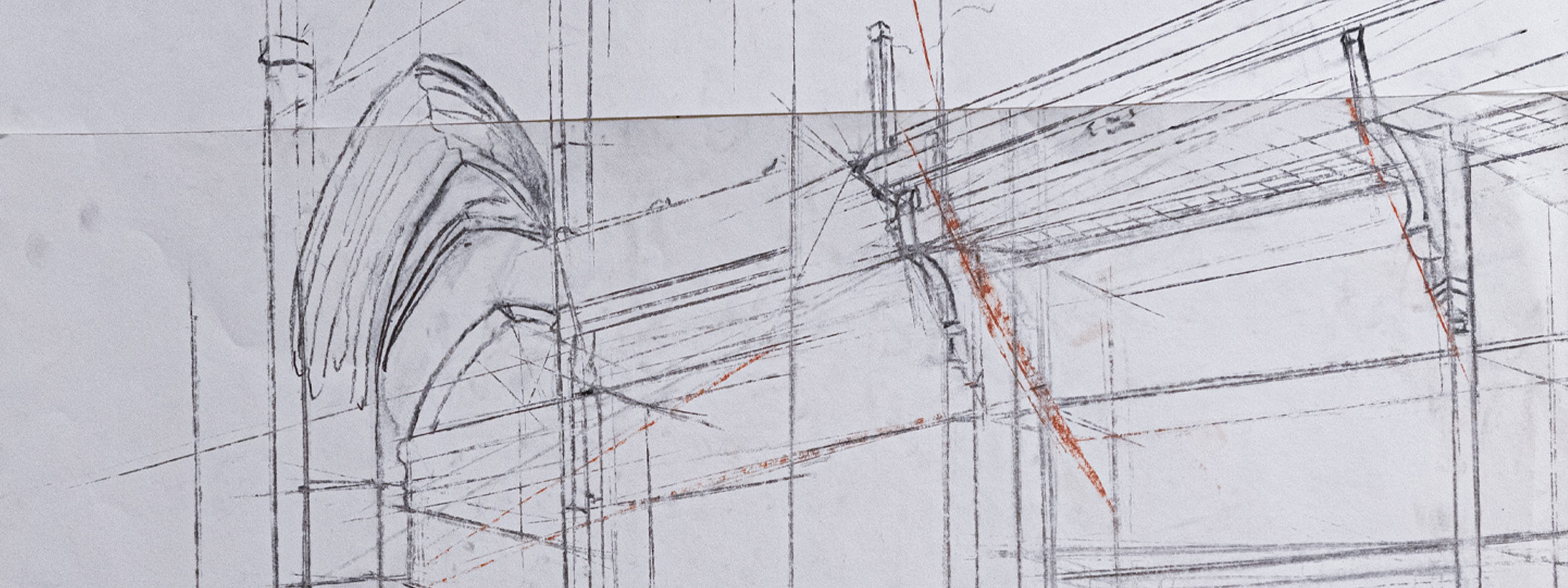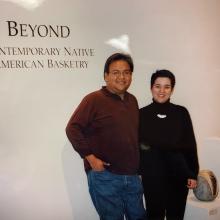Background
Kathleen Ash-Milby received her Art History bachelor's degree in 1991. She went on to receive an MA at the University of New Mexico and then to work in New York City for over 20 years, at American Indian Community House and at the National Museum of the American Indian. Ash-Milby was president of the Native American Art Studies Association from 2011–2015. She was appointed the Curator of Native American Art at Portland Art Museum in 2019.
Interview
What made you decide to study Art History at the University of Washington?
I started my college education as a studio art major at Pacific Lutheran University. I had already taken some art history classes in high school, but I really became enamored with the subject after taking a modern and contemporary art class as a freshman. When I learned that you could major in art history at UW, I had to find out more. After meeting with the art history academic adviser and seeing the list of art history classes offered, I was completely sold, so I transferred to UW as a sophomore.
Do you have any significant memories from your time as a student here?
I enjoyed my time at UW so much. I loved that there were so many, many interesting classes to choose from to meet your general requirements. To me, looking at the course catalog every quarter was like perusing a tasty menu and deciding what I would try next. Since I lived in McMahon Hall, the Art Building was very convenient. Grabbing a coffee in the basement café before lectures, walking to the Ave for lunch, dropping by the Henry Art Gallery or the Burke Museum — all good memories of my experiences there.
When you went on to graduate school at University of New Mexico, were you already thinking about curatorial work?
I decided to pursue museum work after my internship at the Metropolitan Museum of Art during the summer after my junior year. I was never interested in teaching, and the internship opened a window for me, showing me how many other options were available professionally. My supervisors at the Met recommended a graduate degree, regardless of what type of museum work I decided to pursue.
What other organizations or experiences contributed to your education over the years?
One of my most meaningful professional experiences was the work that I did for the American Indian Community House Gallery over the course of about five years. I had already worked at the Smithsonian National Museum of the American Indian as a curatorial research assistant, but the work at AICH allowed me to finally organize my own exhibitions. It was a challenge being suddenly responsible for all aspects of the exhibitions program, but it was a hardcore education in curatorial work and non-profit community work. The artists I worked with were fantastic, and it was great to really get to know the Native art community in New York City.
You worked at the Smithsonian National Museum of the American Indian for 20 years. Would you share some favorite memories from your time there?
Over the course of my time at NMAI both as a research assistant, and then as an assistant curator and associate curator, I was involved in many memorable projects. During my early years at the museum, I assisted with an exhibition of 19th-century Navajo wearing blankets that was pretty special. I learned so much and had the opportunity to travel with the blankets and project team to the Navajo Nation to hold a workshop with contemporary weavers, plus I visited my family there during my time off. At the other end of the spectrum was an exhibition I co-curated with Truman Lowe, which featured three public art installations by Edgar Heap-of-Birds as a collateral project of the Venice Biennale. It was absolutely thrilling to be working in a major international art venue as an advocate for Native American art and having the opportunity to get to know my colleagues from Australia and New Zealand, as well as my Canadian artist and curator friends. My last exhibition, Transformer: Native Art in Light and Sound, felt like the culmination of a lot of ideas that I had been noodling around for years. I have especially enjoyed collaborating with artists and other curators on my various projects, including the retrospective, Kay WalkingStick: An American Artist which I co-organized with my colleague, David Penney. Transformer wouldn’t have been the same without my co-curator, David Garneau.
What made you interested in the Curator of Native American Art position at Portland Art Museum?
The position at the Portland Art Museum was interesting to me on many levels. Professionally, it gave me an opportunity to grow. I was able to accomplish some good work at NMAI, organizing many contemporary art exhibitions and building the contemporary art collection, but I think I was ready for more challenges and responsibilities. At PAM I have the privilege of caring for a wide-ranging collection, in addition to organizing exhibitions at a museum I’ve known for many years. On a personal level, I relished the idea of moving back to this region and being a part of the arts community in and near Portland. I already had a network of professional friends and artists who I have worked with in the past and respect who are based in Oregon. It seemed like a win-win opportunity.
You are curating an exhibition titled Mesh that opens in November 2021. What can you tell us about that?
The exhibition will be my first at the Portland Art Museum that I organized from scratch. It will feature four emerging and early career artists: Lehuauakea, Ka’ila Farrell Smith, Leah Rose Kolakowski, and Lynnette Haozous. I have always enjoyed working with artists at this point in their career and helping to draw attention to work that might not be familiar to most of our audience. These artists have all had the opportunity to work with artist mentors in developing their practice, which is a longstanding tradition in the arts. Even though the media that they work in is diverse, they are all addressing urgent social issues in their work as well.
Do you have any advice for current or prospective students about the value of an arts degree?
It’s a cliché, but follow your passion. Try as much as possible and follow the thread of what excites you. There is so much you can do with a career in the arts. Be open to the opportunities, be persistent, and work hard. If you really believe in what you are doing, you’ll find a way to make it a career.



